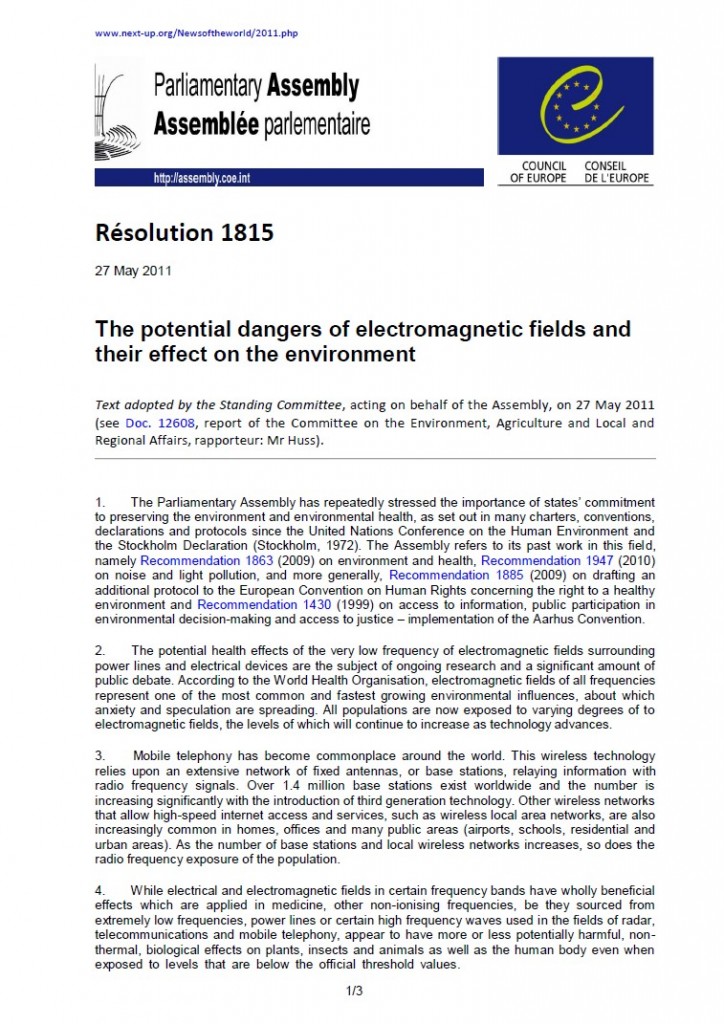Portada del sitio > Prensa > DINAMARCA: The increase in new cases of aggressive brain cancer. The Danish (...)
DINAMARCA: The increase in new cases of aggressive brain cancer. The Danish Cancer Society is reporting that the number of men diagnosed with glioblastoma -the most malignant type of brain cancer- has nearly doubled over the last ten years. Hans Skovgaard Poulsen, the head of neuro-oncology at Copenhagen University Hospital, is calling it a "frightening development."
Viernes 9 de noviembre de 2012 · 4818 lecturas
The increase in new cases of aggressive brain cancer
The number of men who are diagnosed with the most malignant form of brain cancer (glioblastoma), has almost doubled over the past ten years. - We have no idea what caused it and work hard to crack the code to a better treatment than we can offer today, said Dr. Hans Skovgaard Poulsen from the hospital. Today, the average life of just one and a half years after diagnosis.
A sharp increase in the number of new cases of the highly aggressive and malignant form of brain cancer, glioblastoma, are now doctors and researchers to intensify work in laboratories in hopes of finding a more effective treatment.
His Skovgaard Poulsen: - It is a frightening development, we have seen in recent years.
![]() We must recognize that current therapies - surgery, chemotherapy and radiation - is woefully inadequate, said Dr. Hans Skovgaard Poulsen from the hospital.
We must recognize that current therapies - surgery, chemotherapy and radiation - is woefully inadequate, said Dr. Hans Skovgaard Poulsen from the hospital.
Only every tenth live longer than five years
Only just under one in ten patients with this cancer are alive after five years.
The number of new cases has increased substantially over the past decade, as glioblastoma every year now affects about 260 Danes. And the increase include especially men.
Scary development
![]() It is a frightening development. And we simply do not know the cause. Therefore, we very quickly started to clarify what this creepy increase may be due, says Hans Skovgaard Poulsen.
It is a frightening development. And we simply do not know the cause. Therefore, we very quickly started to clarify what this creepy increase may be due, says Hans Skovgaard Poulsen.
Today patients are treated by highly trained interdisciplinary teams, but despite intensive efforts, the cancer almost impossible to come to life. Brain tumor often come back quickly.
Cancer Society supports
![]() We have tried to treat patients with many new drugs, both biological and chemical, hoping to improve survival, but our progress is unfortunately extremely modest, recognizing His Skovgaard Poulsen, who has just received 1.5 million kroner from the Danish Cancer Society’s Scientific Committee to develop new relevant cell models.
We have tried to treat patients with many new drugs, both biological and chemical, hoping to improve survival, but our progress is unfortunately extremely modest, recognizing His Skovgaard Poulsen, who has just received 1.5 million kroner from the Danish Cancer Society’s Scientific Committee to develop new relevant cell models.
For His Skovgaard Poulsen and researcher team around Radiation Biology Laboratory, it is crucial to identify new approaches to beating the highly malignant cancer cells in brain tumor death. Only through experiments on relevant cancer cell models in laboratories and - if the results are positive - then the patients. It is thus a prerequisite to improve the treatment of patients that previously achieved such good results from preclinical models that there is a solid basis for decision making.
![]() We have tried to deal with new substances that attack the cells more widely, and some who are more targeted to the individual cancer cell. Substances which we know helps in other cancers, but when we test them on the malignant hjernevulster, they are without power, explains Hans Skovgaard Poulsen.
We have tried to deal with new substances that attack the cells more widely, and some who are more targeted to the individual cancer cell. Substances which we know helps in other cancers, but when we test them on the malignant hjernevulster, they are without power, explains Hans Skovgaard Poulsen.
Avastin benefit
The most effective drug in recent years also has been shown to benefit Gliobastom patients is Avastin - the biologically targeted agent that works by blocking the growth of blood vessels that supply the tumor with nutrients and oxygen.
![]() But we really need a research breakthrough, if it is to succeed in significantly improved survival, says Hans Skovgaard Poulsen.
But we really need a research breakthrough, if it is to succeed in significantly improved survival, says Hans Skovgaard Poulsen.
Ver la noticia original AQUÍ
COMENTARIO DE MICROWAVE NEWS:
November 8, 2012
Updated November 9
The Danish Cancer Society is reporting that the number of men diagnosed with glioblastoma -the most malignant type of brain cancer- has nearly doubled over the last ten years. Hans Skovgaard Poulsen, the head of neuro-oncology at Copenhagen University Hospital, is calling it a "frightening development."
The society is not linking the increase to cell phones or to anything else. "We have no idea what caused it," Poulsen said in a statement issued by the Danish Cancer Society on November 2.
Both the Interphone study and the group led by Sweden’s Lennart Hardell have reported that long-term cell phone use is associated with higher rates of glioma. (Glioblastoma is a type of glioma.)
"I think the data is true and valid," Christoffer Johansen of the Danish Cancer Society told Microwave News. Johansen is a member of the team that has been working on the Danish cohort study, which has been investigating the possible links between cell phones and brain tumors. The group has long maintained that there is no association. (For an analysis of the Danish cohort study, follow this link.)
Like Poulsen, Johansen did not offer any explanation as to what may have led to the increase.
Joachim Schüz, who used to work at the Danish Cancer Society and is now with IARC, could not be reached for comment. Schüz and Johansen were members of the Interphone project and work on the Danish cohort study.
Schüz has long said that he does not believe that cell phones present a brain tumor risk. One of his main arguments against an association has been that national cancer statistics have stayed relatively stable.
November 9
This morning, we heard from Joachim Schüz, who is travelling in Asia. He tells us that the news about the increase in glioblastoma is "indeed a concern." Like Johansen, Schüz does not have an explanation for what may be responsible for the uptick in these aggressive brain tumors, but he does not believe that it is because of better diagnostics.
Schüz added that he sees "no reason to question the quality of the Danish cohort study."
Ver el comentario original AQUÍ







